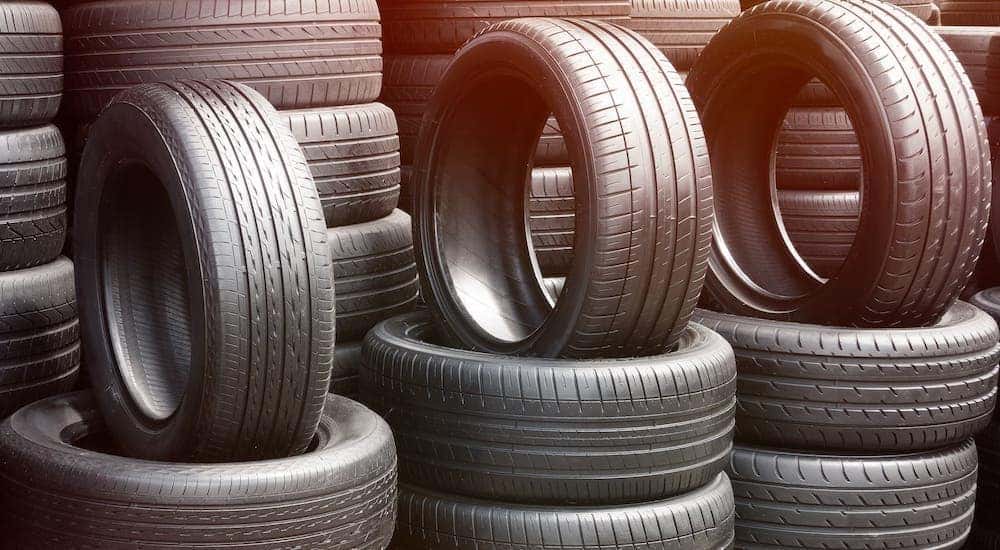Morris Tire and Alignment: Your Trusted Resource for Reliable Service
Wiki Article
Tire Service: Comprehending Tire Pressure Tracking Equipments
Comprehending Tire Stress Surveillance Solutions (TPMS) is an important facet of preserving optimum vehicle performance and security when driving. With developments in vehicle innovation, TPMS has actually become a basic feature in contemporary cars, giving real-time info on tire stress levels. Diving much deeper right into the intricacies of TPMS, one can uncover the numerous elements that make up this system and the importance of each in guaranteeing accurate surveillance. From direct to indirect TPMS systems, the landscape of tire pressure surveillance varies, each with its unique set of considerations and benefits. Stay tuned to unwind the complexities of TPMS, from maintenance suggestions to the undeniable benefits of keeping your tires effectively blew up. morris tire and alignment.
Importance of TPMS
The importance of Tire Stress Surveillance Systems (TPMS) exists in their capability to enhance car security and efficiency through real-time tracking of tire stress degrees. Preserving the appropriate tire pressure is important for ensuring optimal handling, braking, and overall safety of a lorry. TPMS supplies chauffeurs with prompt feedback on any underinflated or overinflated tires, allowing for prompt modifications to be made.
Components of TPMS
Consisting of various vital components, a Tire Stress Surveillance System (TPMS) functions as an advanced safety function in modern-day automobiles. The major components of a TPMS include sensors, a control module, and a caution indicator. Sensors are usually situated in the tire valve stem or connected to the wheel assembly, where they gauge tire pressure and transmit data to the control module. The control module processes this info and activates a caution if it finds significantly low pressure in any one of the tires. The warning indication, usually a symbol on the dashboard, alerts the motorist to examine the affected tire or tires. Some advanced TPMS models additionally show the actual tire pressure analyses for each and every tire, providing motorists with real-time information to ensure ideal tire efficiency and safety and security. By keeping track of tire stress continuously, TPMS aids prevent crashes, reduces tire wear, and improves fuel performance, making it an essential component for vehicle security and efficiency.
Types of TPMS

On the other hand, indirect TPMS counts on the lorry's wheel speed sensors to keep an eye on tire stress. This system finds underinflation by contrasting the rotational speeds of the wheels. Indirect TPMS is much less costly than direct TPMS, as it makes use of existing sensing units within the lorry.
While direct TPMS provides much more exact analyses, indirect TPMS is easier in layout and generally calls for much less upkeep. Both systems have their advantages and restrictions, and the option in between them commonly relies on elements such as price, lorry make, and personal choice. Comprehending the differences in between these 2 types of TPMS can help automobile proprietors make notified choices relating to tire maintenance and security.
TPMS Upkeep Tips
Conduct regular checks on the tire great site pressure levels and contrast them with the TPMS readings to guarantee they are constant. During tire turning or replacement, make sure that the TPMS elements are handled carefully to stop any type of prospective damages. If the TPMS alerting light brightens on the control panel, attend to the concern without delay by examining the tire stress and the overall system for any kind of mistakes.Advantages of Correct Tire Pressure
Keeping correct tire stress, as highlighted in TPMS Upkeep Tips, is essential for enjoying the countless advantages associated with optimal tire stress levels. One of the main benefits of preserving the correct tire stress is boosted fuel effectiveness. When tires are properly inflated, there is much less rolling resistance, resulting in far better fuel economic climate. In addition, appropriate tire pressure guarantees also tire wear, expanding the life-span of the tires and advertising more secure driving problems. With the ideal tire stress, cars likewise have far better handling and traction, particularly in adverse climate condition. This can improve overall driving efficiency and safety and security for the chauffeur and guests. Additionally, preserving optimum tire stress can add to a smoother and much more comfy ride by decreasing vibrations and noise triggered by underinflated tires. In conclusion, the advantages of correct tire stress surpass just tire long life; they include enhanced gas performance, improved safety and security, much better vehicle performance, and overall driving convenience.Conclusion
Finally, recognizing tire stress surveillance systems (TPMS) is important for keeping optimum tire stress and ensuring car safety. By identifying the importance of TPMS, being familiar with its components, recognizing linked here the different types readily available, adhering to appropriate maintenance suggestions, and recognizing the benefits of keeping appropriate tire pressure, vehicle drivers can boost their driving experience and prolong the lifespan of their tires. Correct tire stress is key to safe and reliable automobile procedure.
Report this wiki page